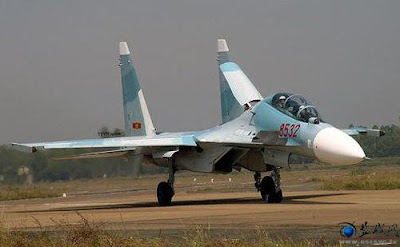 |
| Su-30 Fighter Jet |
Russia has increased the prices of the latest defence equipments, by ten
times, to be procured by India. The Russian defence manufacturing
companies have sent their bid- ten times the opening price of the
tenders.
A leading newspaper daily, Sunday Guardian, carried a report which mentioned that Russian companies have increased the price of defence equipments like- rocket launchers, T-90 tanks, tanks ammunition to as high as ten-folds.
For the procurement of 10,000 rocket launchers ministry of defence has estimated an approximate price of rs 130 crores, Russia is asking rs 4,000 crores for the launchers.
Ammunition rounds of T-90 tanks, pegged at rs 980 crores, were offered at an opening price of rs 4,000 crores by Russia's Rosoboronexport.
In another example, workshop equipments were offered at an increased price of rs 1,800 crores against rs 250 crores anticipated by the ministry of defence.
The change in stance by the Russian companies is nothing new. Russia has a history of increasing the price of its defence equipments. The price of aircraft carrier Admiral Gorshkov was repeatedly revised.
A leading newspaper daily, Sunday Guardian, carried a report which mentioned that Russian companies have increased the price of defence equipments like- rocket launchers, T-90 tanks, tanks ammunition to as high as ten-folds.
For the procurement of 10,000 rocket launchers ministry of defence has estimated an approximate price of rs 130 crores, Russia is asking rs 4,000 crores for the launchers.
Ammunition rounds of T-90 tanks, pegged at rs 980 crores, were offered at an opening price of rs 4,000 crores by Russia's Rosoboronexport.
In another example, workshop equipments were offered at an increased price of rs 1,800 crores against rs 250 crores anticipated by the ministry of defence.
The change in stance by the Russian companies is nothing new. Russia has a history of increasing the price of its defence equipments. The price of aircraft carrier Admiral Gorshkov was repeatedly revised.
The aircraft carrier christened as, INS Vikramaditya’s was sold to India at a staggering cost of USD 2.3 billion against an initial price tag USD 974 million.
India and Russia signed a multi-billion dollar deal in 2005 for the purchase of the Soviet-built Admiral Gorshkov carrier, but its delivery has already been delayed twice, pushing up the cost of refurbishing the carrier from $947 million to $2.3 billion.
The delivery of the Admiral Gorshkov to the Indian navy is expected in December 2012.
The warship is a modified Kiev-class carrier, originally named Baku. The ship was laid down in 1978 at the Nikolayev South shipyard in Ukraine, launched in 1982, and commissioned with the Soviet Navy in 1987.
It was renamed after the collapse of the Soviet Union in 1991. In 1994, following a boiler room explosion, the Admiral Gorshkov sat in dock for a year for repairs. In 1995, it briefly returned to service and in 1996 was finally withdrawn and put up for sale.
The ship has a displacement capacity of 45,000 tons. It has a maximum speed of 32 knots and an endurance of 13500 nautical miles (25,000 km) at a cruising speed of 18 knots.
Similarly, Russian Sukhoi-30 fighter aircraft also saw an astronomical increase in price in three years, by a whopping 155%, in 2010.
"Never has so much difference been seen in price, even due to inflation, but Russia has had a record of over-pricing their equipment. Companies are aware that the buyer country has done some estimation of the price, but they may not know the actual price the buyer country has in mind," said a source.
http://daily.bhaskar.com/




No comments:
Post a Comment